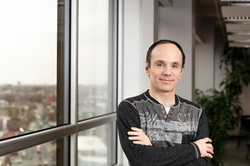Programming Leftovers
-
Optimizing compilers deduplicate strings and arrays
When programming, it can be wasteful to store the same constant data again and again. You use more memory, you access more data. Thankfully, your optimizing compiler may help.
-
Toolchains adventures - Q3 2022
This is the sixth post in my toolchains adventures series. Please check the previous posts in the toolchains category for more context about this journey.
-
Planned vs evolved behavior
Time and time again we find ourselves with problems where we wonder to what extent is this a deliberately planned behavior and to what extent has it just evolved. Most behavior is on a gradient somewhere between the two.
-
Progressive image stippling and greedy blue noise importance sampling
I recently read the “Gaussian Blue Noise” paper by Ahmed et al. and was very impressed by the quality of their results and the rigor of their method.
They provide a theoretical framework to analyze the quality of blue noise from a frequency analysis perspective and propose an improved technique for generating blue noise patterns. This use of blue noise is very different from “blue noise masks” and regular dithering – about which I have a whole series of posts if you’re interested.
-
Casting Perls before Splines
Any way I took it myself to analyse the situation and have finally come to the conclusion that we may be looking at the "problem" the wrong way. Perhaps we are looking at the bigger picture when we should seeing the picture bigger. Maybe, just maybe, that picture of a camel doesn't symbolise Perl, but in fact IS Perl...Perl code, that is. I know it is possible to make pictures that aren't valid perl code. But perhaps over the decades of use we have come to accept an illusion as a reality. When one gives such an illusion a "True" value, one also blurs the distinction between the Virtual Image and a Real Image.. You see a Virtual Image is an image that APPEARS to represent something, but only a Real Image can be projected.

